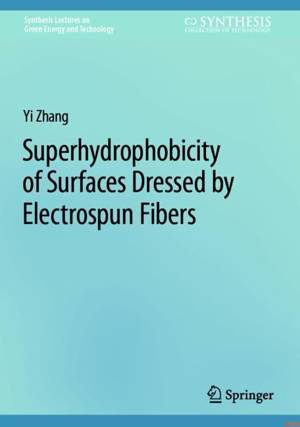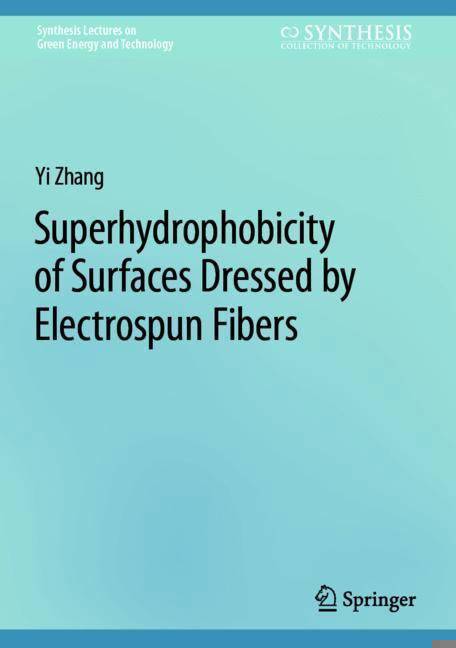
- Retrait gratuit dans votre magasin Club
- 7.000.000 titres dans notre catalogue
- Payer en toute sécurité
- Toujours un magasin près de chez vous
- Retrait gratuit dans votre magasin Club
- 7.000.0000 titres dans notre catalogue
- Payer en toute sécurité
- Toujours un magasin près de chez vous
Description
This book provides insights into the wetting behavior on fiber-dressed surfaces and guidelines for developing superhydrophobicity based on electrospinning. In developing superhydrophobicity, electrospinning possesses the following advantages over other fabrication techniques. First, the electrospun micro- and nanofibers, which may also featured with secondary fiber morphology, provide sufficient surface roughness for superhydrophobicity. Second, electrospinning is considered an additive manufacturing technique, so the surfaces to be modified are not destroyed for superhydrophobicity. Third, the introduced electrospun structure is featured with high porosity with inter-fiber pores, allowing for a high vapor transmission rate, which is necessary in many applications such as wound dressing, gas sensor.However, books focused on developing superhydrophobicity using electrospinning are rarely found. Electrospinning is only introduced as one section in most superhydrophobicity-related books, and the mechanism of superhydrophobicity by different electrospinning-based methods lacks detailed explanation.
Spécifications
Parties prenantes
- Auteur(s) :
- Editeur:
Contenu
- Nombre de pages :
- 106
- Langue:
- Anglais
- Collection :
Caractéristiques
- EAN:
- 9783031555510
- Date de parution :
- 01-04-24
- Format:
- Livre relié
- Format numérique:
- Genaaid
- Dimensions :
- 174 mm x 246 mm
- Poids :
- 408 g

Les avis
Nous publions uniquement les avis qui respectent les conditions requises. Consultez nos conditions pour les avis.






